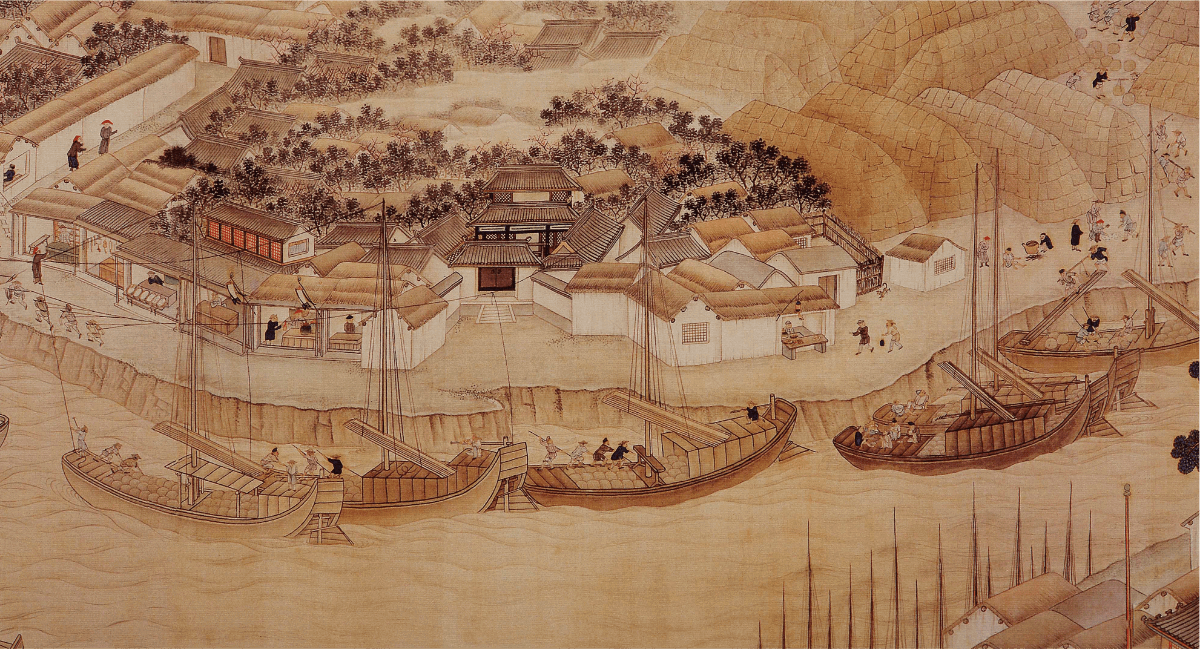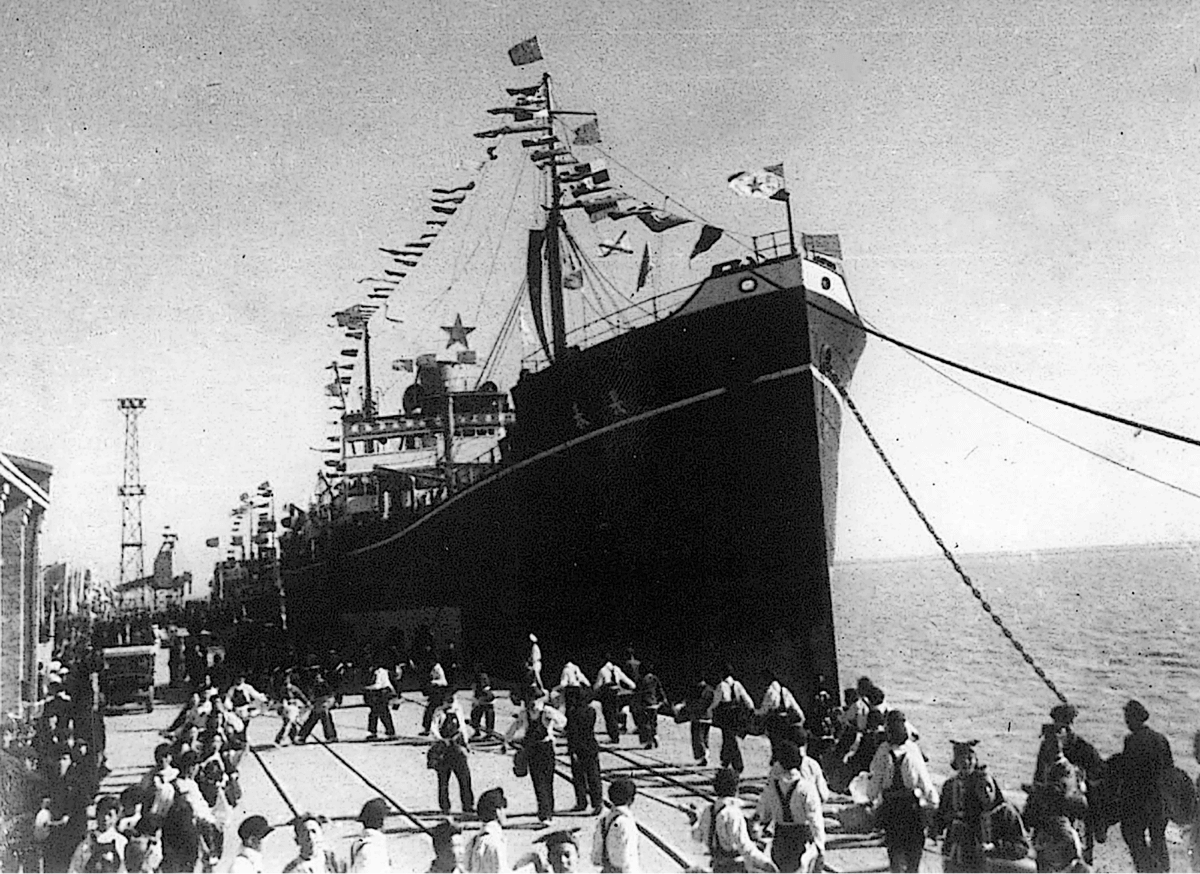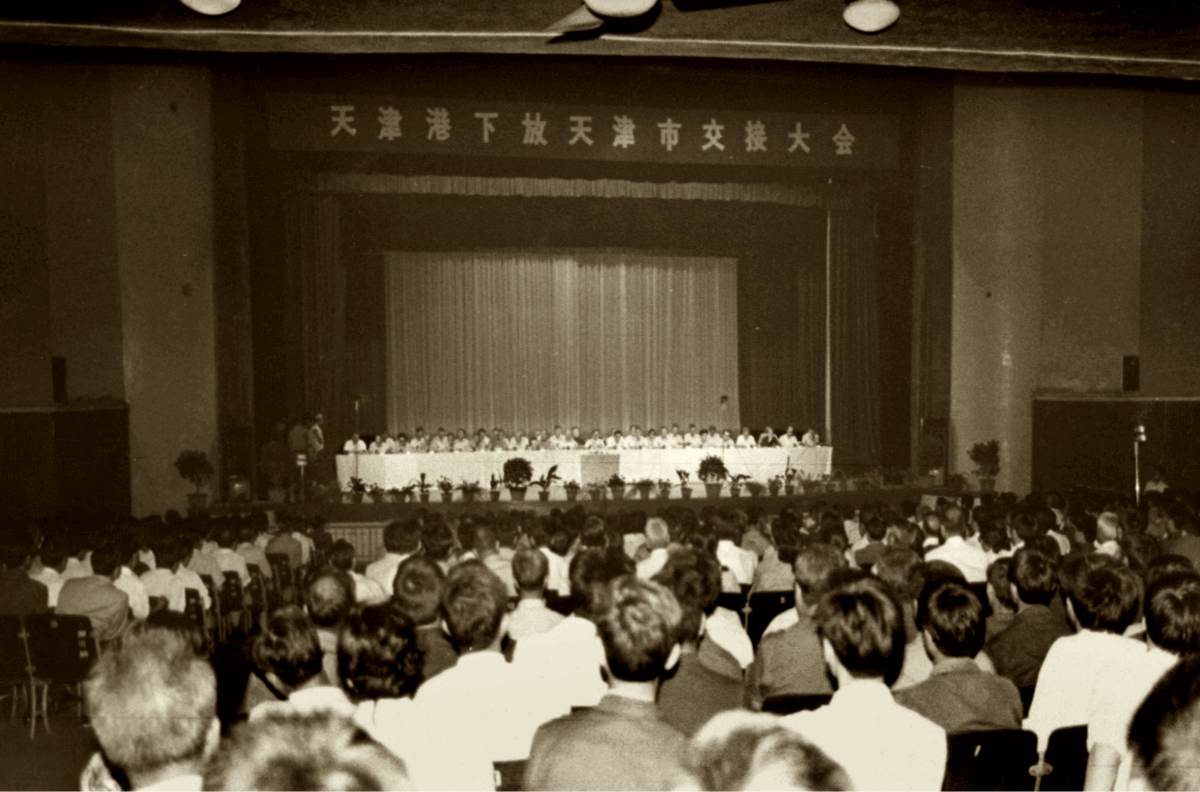Rising to the sea, it has a long history
(before 1952)
The footprint of Tianjin Port rising to the sea stems from the five thousand year splendid civilization of the Chinese nation. According to the records of the book of history, Yu Gong, after the successful flood control of Shun and Yu, the water transportation activities of boats and boats from Tianjin to Jizhou through the Yellow River have begun. At the end of the Eastern Han Dynasty, ditches were opened in the North China Plain,
An inland river shipping network dominated by Haihe River has been formed, forming the prototype of Tianjin port. After the Tang Dynasty, the port gradually moved eastward, becoming the earliest estuary port in Tianjin. In the yuan, Ming and Qing Dynasties, Tianjin Port was prosperous and became a waterway intermodal hub with five-way commerce, north-south connections and east-west radiation. In 1860, Tianjin Port was opened as a trading port. Thousands of years old port, rise and fall tide rise. After the late Qing Dynasty, after several wars and vicissitudes, it was not until the liberation of Tianjin in January 1949 that the dilapidated and almost silted Tianjin Port returned to the hands of the people. In the long historical evolution, Tianjin Port has never been smooth from the beginning of its gestation to its development. It has encountered countless difficulties, but all the way, the most important reason is that the unique, broad and profound Chinese culture has played a supporting role, and also formed the source of Tianjin Port spirit.

Sharing worries for the country, selfless dedication and hard work
(1952-1978)
At the beginning of the founding of the people's Republic of China, the country was waiting for all kinds of things to be done. In August, 1951, the Government Council of the Central People's government decided to build Tanggu new port. The Tianjin Port people, who were the masters of the country, started from scratch and successfully completed the first phase of the port construction project in only more than a year, which revitalized the almost silted port and reopened the port on October 17, 1952. Just a week after the reopening of Tianjin Newport, Chairman Mao, the great leader, came to Tianjin Newport to inspect, and left a historical echo of "we also need to build larger, more and better ports in the country". In the early days of port opening, without large-scale machinery and advanced tools, Tianjin Hong Kong people relied on the three treasures of "hand hook, shoulder pad and broken cotton padded jacket" to earn a remarkable throughput of 740000 tons in 1952. In 1959, the state began the second port expansion project of Tianjin port after three years of natural disasters and extreme lack of material supply. By 1966, five berths above 10000 tons were newly built in the whole port, and the throughput exceeded 5million tons at one stroke, ending the history that Tianjin port could not handle 10000 tons of ships all day. In the early 1970s, in order to solve the serious situation of ship and port crushing nationwide, Premier Zhou Enlai issued the call of "changing the appearance of the port in three years", and the third phase of large-scale expansion project of Tianjin Port began. In 1974, the cargo throughput of Tianjin Port exceeded 10million tons for the first time, just building China's first man-made industrial port on a saline alkali wasteland. This period gave birth to the early spirit of Tianjin port, which contains the cultural genes of sharing worries for the country, selfless dedication and hard work.

Be pragmatic and hardworking, dare to be the first, and forge ahead
(1978-2000)
In 1978, after the Third Plenary Session of the Eleventh Central Committee of the Communist Party of China, Tianjin Port took advantage of the spring breeze of reform and opening up to emancipate the mind and break the ice. On June 1, 1984, with the approval of the CPC Central Committee and the State Council, Tianjin Port took the lead in implementing the management system of "dual leadership and local priority" and the financial policy of "supporting the port with the port and offsetting expenditure with income", opening a new page in the history of ports in New China, It has become a pioneer in the reform of China's port system and the expansion of opening-up. On August 21st, 1986, when Comrade Deng xiaoping visited Tianjin port, he saw the great changes that had taken place here and said happily, "people are still these people, and the land is still this land. As soon as the reform is carried out, the benefits will come up." Since then, Tianjin Port has dared to take the lead in the world, establish the consciousness of "market" in the coastal ports of the country earlier, establish the market-oriented development idea, break through the shackles of the planned economic system, take the lead in market-oriented reform, and successively create several "firsts" in the coastal ports: it has built China's first commercial bonded warehouse, and created a new model for the development of China's port bonded trade business; The joint venture established the first Sino foreign joint venture dock company in China, creating a precedent for the joint venture and cooperation between state-owned docks and foreign investors; Take the lead in carrying out the joint-stock reform of port enterprises, and "Tianjin port storage and transportation" has become the first listed company in the country's ports; The opening of China's first port EDI center has accelerated the development of China's port informatization, and so on. Since 1993, the cargo throughput of Tianjin Port has increased by 10 million tons every year. By 2001, Tianjin Port has become the first 100 million ton port in northern China, ranking among the top 20 ports in the world. During this period, Tianjin Port accelerated its development as a pioneer in reform, giving the spirit of Tianjin port a new gene of being pragmatic, hardworking, pioneering and enterprising.

Unity and development, pursuit of excellence, pragmatism and innovation
(2000-2017)
In the new century, after China joined the World Trade Organization in 2001, Tianjin Port faced the in-depth development of economic globalization, actively seized the opportunity of integrating the development and opening up of Binhai New Area into the national strategic development, completed the overall transformation from Tianjin Port Authority to Tianjin Port Group Company, realized the separation of government and enterprises, entered a period of rapid growth in scale, and took overcoming the world port construction problem of large-scale reclamation in muddy shallow sea beaches as a breakthrough, It has successively built a 300000 ton crude oil terminal, the largest single container terminal in Asia, the largest international cruise home port in Asia and the longest artificial beach in China, built the largest Dongjiang Bonded Port in Tianjin with the best policy, invested 10 billion yuan to complete the "north coal to South" project, and took the lead in launching the "oil to electricity" project of container yard and Bridge in coastal ports across the country, Several sea railway combined transport channels connecting inland dry ports have been opened up, and the first financial company with legal person qualification of the national port enterprise group has been established. Various innovations have always been in the forefront of the country's coastal ports, the status and influence of ports in the world have been greatly improved, the radiation and driving force of urban and regional economic development have been continuously enhanced, and they have successfully ranked among the world's first-class ports. During this period, the spirit of Tianjin Port was endowed with a new gene of unity and development, pursuit of excellence, pragmatism and innovation.












